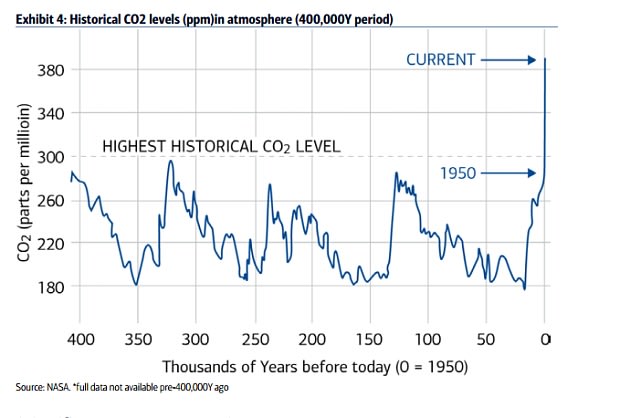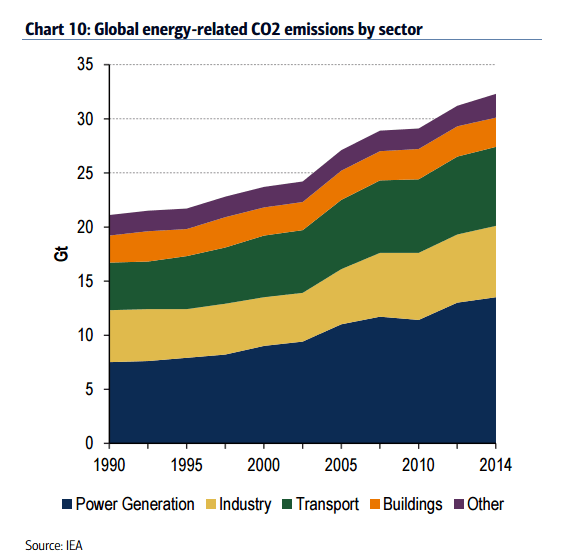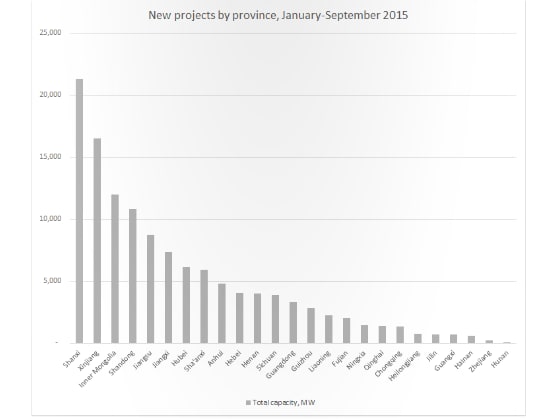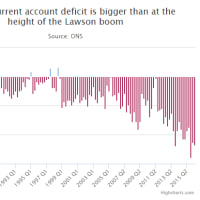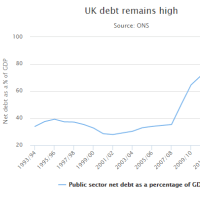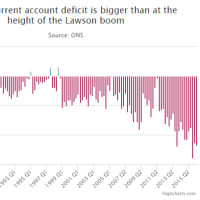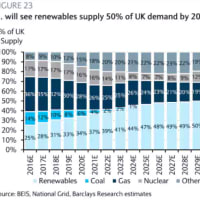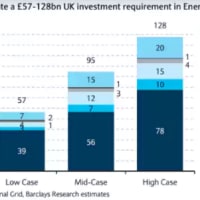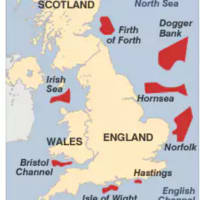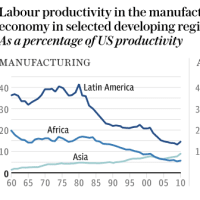Even if the global warming scare were a hoax, we would still need it
(地球温暖化が詐欺だとしても必要、なんだな)
By Ambrose Evans-Pritchard
Telegraph: 8:56PM GMT 16 Dec 2015


(地球温暖化が詐欺だとしても必要、なんだな)
By Ambrose Evans-Pritchard
Telegraph: 8:56PM GMT 16 Dec 2015
China is the low-carbon superpower and will be the ultimate enforcer of the COP21 climate deal in Paris
中国は低炭素超大国で、究極のパリ協定執行者になるのです。
Chinese scientists have published two alarming reports in a matter of weeks. Both conclude that the Himalayan glaciers and the Tibetan permafrost are succumbing to catastrophic climate change, threatening the water systems of the Yellow River, the Yangtze and the Mekong.
中国の科学者が僅か数週間の間に2つもおっそろしー報告書を公表しました。
どっちもヒマラヤの氷河とチベットの永久凍土は大惨事的気候変動に屈してしまうアル!黄河と揚子江とメコン川の水系を脅かすアル!という結論です。
The Tibetan plateau is the world's "third pole", the biggest reservoir of fresh water outside the Arctic and Antarctica. The area is warming at twice the global pace, making it the epicentre of global climate risk.
チベット高原って世界「第三の極」でして、北極と南極以外で一番でっかい真水の宝箱なのです。
そのエリアが世界平均の2倍のスピードで温まってるんだから、地球環境リスクのメッカなわけですよ。
One report was by the Chinese Academy of Sciences. The other was a 900-page door-stopper from the science ministry, called the "Third National Assessment Report on Climate Change".
報告書の一つは中国科学院作。
もう一つは政府科学技術部が書いた漬物石レベルの900ページ。
題して『気候変動に関する第3回全国調査報告書』。
The latter is the official line of the Communist Party. It states that China has already warmed by 0.9-1.5 degrees over the past century ? higher than the global average - and may warm by a further five degrees by 2100, with effects that would overwhelm the coastal cities of Shanghai, Tianjin and Guangzhou. The message is that China faces a civilizational threat.
後者は中国共産党の公式見解ね。
曰く、中国は既に過去100年間に0.9-1.5度温まってしまった、世界平均以上アル、しかも2100年までに後5度温かくなるかもしれない上に、上海、天津、広州などの沿岸都市を圧倒する影響があるかもしれないアル!
Whether or not you accept the hypothesis of man-made global warming is irrelevant. The Chinese Academy and the Politburo do accept it. So does President Xi Jinping, who spent his Cultural Revolution carting coal in the mining region of Shaanxi. This political fact is tectonic for the global fossil industry and the economics of energy.
皆さんが地球温暖化は人間のせい、という仮説にさんせーかどうかはどーでも良いんです。
中国科学院と政治局はさんせーなのね。
山東省の鉱山地帯で石炭を運んで文化大革命を過ごした、習近平主席もさんせーなのね。
この政治的事実は世界の化石燃料業界とエネルギー経済学にとって地殻変動レベルなわけ。
Until last Saturday, it was an article of faith among Western climate sceptics and some in the fossil industry that China would never sign up to the COP21 accord in Paris or accept the "ratchet" of five-year reviews.
先週の土曜日まで、西側の温暖化懐疑派と一部の化石燃料業界人は、中国がパリ協定にサインすることなんて絶対にないもんね、5年評価「装置」なんて絶対に認めないもんね、と信じてました。
They have since fallen back to a second argument, claiming that the deal is meaningless because China will not sacrifice coal-driven growth to please the West, and without China the accord unravels since it now emits as much CO2 as the US and Europe combined.
その後、第二の論点に転じて、こんな協定なんて意味ねーし、中国が西側にゴマするために石炭主導成長を潰すことなんてないから、米国とヨーロッパを足したぐらいの二酸化炭素を排出してる中国抜きの協定なんて崩壊だから、とご主張になってます。
This political judgment was perhaps plausible three or four years ago in the dying days of the Hu Jintao era. Today it is clutching at straws.
この政治的判断って、もしかすると、3-4年前ならアリだったんだよね…胡錦濤最後の日々なら。
今じゃ藁をもすがるって感じ。
Eight of the world's biggest solar companies are Chinese. So is the second biggest wind power group, GoldWind. China invested $90bn in renewable energy last year and is already the superpower of low-carbon industries. It installed more solar in the first quarter than currently exists in France.
太陽光発電会社の世界的大手の内、8社は中国企業です。
世界最大の風力発電会社、GoldWindだって中国企業だし。
中国は昨年、再生可能エネルギーに900億ドルも投資しましたし、既に低炭素業界の超大国ですよ。
第1四半期の間に、フランスに現存するよりも沢山の太陽光発電施設を作っちゃたし。
The Chinese plan to build six to eight nuclear plants every year, reaching 110 by 2030. They intend to lever this into worldwide nuclear dominance, as we glimpsed from the Hinkley Point saga.
中国は原発を毎年6-8基建設して2030年までに110基にすることを計画しています。
ヒンクリーポイント物語で垣間見えたように、これを利用して世界的な原発覇権国になるつもりなんですね。
Home-grown energy is central to Xi Jinping's drive for strategic security. China's leaders know what happened to Japan under Roosevelt's energy embargo in the late 1930s, and they don't trust the sea lanes for supplies of coal and liquefied natural gas. Nor do they relish reliance on Russian gas.
エネルギーの自給ってのは習近平主席の戦略的セキュリティ・ドライブの要なんですよ。
中国首脳陣は、1930年代の末にルーズベルトにエネルギー禁輸をやられて日本がどんなことになっちゃったかわかってるし、石炭とLNGの供給のための海上交通を信じてませんから。
ロシア産ガス依存だって喜んでないし。
Isabel Hilton from China Dialogue says the energy shift has reached a point where Beijing has a vested commercial interest in holding the world to the Paris deal. "The Chinese think they can dominate low-carbon technologies," she said.
チャイナ・ダイアログのイザベル・ヒルトン氏曰く、こういうエネルギーのシフトは中国政府が世界にパリ協定を守らせることに商業的な利害関係を持つまでになっちゃった、とのこと。
「中国人は低炭素テクノロジーを支配出来ると思ってるから」
This is why they feel confident enough to forge ahead with a cap-and-trade system for carbon emissions in 2017, covering more CO2 than all of the world's 40 existing schemes put together.
中国人が2017年にキャップ&トレード方式による排出量取引制度を確立して、既存の40のスキーム全部を合わせたよりも沢山の二酸化炭素をカバる自信を持ってる理由は、これなんですね。
China is changing fast. The energy intensity of Chinese GDP is in freefall as Xi Jinping tries to wean the economy off primitive metal-bashing and move up the technology ladder.
中国は急速に変身中です。
習近平主席が経済を原始的な重工業からテクノロジー的にもっと高度なものに移行させようと頑張ってるので、エネルギー集約型のGDPは自由落下中です。
The "tertiary sector" has jumped from 42pc to 51pc of the economy since 2007, taking the baton as the Party starts to tackle vast swathes of excess capacity in steel, cement and shipbuilding.
経済に占める「第三セクター」の割合は、2007年の42%から51%まで急増してまして、中国共産党が鉄鋼、セメント、造船の莫大な過剰生産能力に取り組み始める中で、バトンを受け取りつつあります。
It comes at a time when the cost curve for renewables has fallen far enough to make the post-carbon switch economically painless. "The average cost of global solar was $400 a megawatt/hour worldwide in 2010. It fell to $130 in 2014, and now it has fallen below $60 in the best locations. Almost nobody could have imagined this six years ago," said Mark Lewis from Barclays.
再生可能エネルギーのコスト曲線が脱炭素へのスイッチの経済的な痛みをなくせるほど下がってる時だし。
「世界的な太陽光発電の平均コストって、2010年は400ドル/MwHだったんだけど、2014年には130ドルまで下落したからね。でもって今度は、一番イケてる場所だと60ドル以下までいっちゃってるし。こんなこと6年前に想像出来た人なんてほとんどいないっしょ」とバークレイズのマーク・ルイス氏。
China installed a record 23 gigawatts (GW) of windpower in 2014. It did so because wind is quick and cheap. Lazard calculates that the "levelized cost" of unsubsidized onshore wind has dropped 61pc globally, thanks to smart software, better blades and higher turbines that catch the sweet spot. It thinks wind now undercuts coal and gas, and by a wide margin in optimal spots.
中国は2014年に史上最高23Gwもの風力発電所を建設しました。
風力が安くて早いから。
ラザードの計算だと、補助金なしの陸上風力発電の「均等化発電原価」は世界的に61%も下がったそうですよ。
高性能なソフトウェアとかブレードの改良とかスイート・スポットを狙えるタービンの高層化のおかげ。
今じゃ風力は石炭やガスよりもお値打ちで、イケてる地点ならムチャクチャお値打ちなんだとか。
Specifically, the levelized cost has fallen "well below" coal in Jilin, Jiangsu and Zhejiang with new turbines, according to a study by the North China Electric Power University.
華北電力大学の研究によると、均等化発電コストは特に吉林、広州、浙江に新型タービンを立てると、石炭を「大きく下回る」までに下落するんだそうです。
Whether China's coal use has already peaked is a hotly disputed subject. The country's coal association says consumption dropped 4.7pc in the 12 months to October, but this may be a blip.
中国の石炭消費が既にピークしちゃったのかどうかは侃侃諤諤の議論です。
この国の石炭協会によると、消費量は10月までの12ヶ月間で4.7%も減ったけど一時的なもんかもしらん、とのこと。
The economy has just been through a recession. It is now recovering. Car output jumped from 1.3m in July to 2.2m in November. Infrastructure spending is up 18pc as fiscal stimulus kicks in.
中国経済は不況を乗り切ったばっかだし。
今は回復中なのね。
自動車の生産台数は7月の130万台から11月は220万台まで急増しました。
インフラ支出は財政刺激策が浸透するにつれて18%プラスになってます。
Yet peak coal is in sight and it is a fair bet that the country will achieve peak CO2 emissions long before the target date of 2030.
でも石炭ピークは見えてるし、中国は目標の2030年よりも大分前に二酸化炭素排出量をピークさせそうだし。
The key point is that only 60pc of China's coal is used for power plants, compared with 90pc in the US. The rest is burned in gruesomely toxic home boilers or in small workshops, and this where the sledgehammer is falling. Beijing is phasing out coal boilers within the city limits.
大事なのは、中国の石炭のたった60%しか発電所で使われてないってことね(米国は90%)。
残りは、おぞましいことに、おうちの毒々マイボイラーとかちっさな工場なんかで燃やされてて、ここが大々的な取り締まりを受けつつあるんですな。
北京は市の境界内での石炭ボイラーの使用を段階的に廃止中です。
Greenpeace says China has shut down 18GW of old coal plants, and is likely to shut another 60GW by 2020. These are the worst polluters, mostly "subcritical" plants below 50 megawatts. Cleaner ones are being built. The latest "high efficiency low emission" (HELE) facilities cut CO2 by 25pc-33pc.
グリーンピース曰く、中国は18Gw相当の古い石炭発電所を閉鎖する、でもって2020年までに更に60Gw分閉鎖するんだそうで。
こいつらが一番公害垂れ流しの犯人でして、大半は50Mw以下の「どーでもいい」発電所。
もっと環境に良い発電所が建設されています。
最新の「HELE」発電所なんて二酸化炭素の排出量を25-33%も減らしちゃうんだから。
It is true that regional governments took advantage of newly-devolved powers to approve another 155 plants for 123GW this year, alone equal to Brazil's annual use. Horrified officials in Beijing are trying to reverse course. The expansion makes no sense since coal thermal plants are already running at below 50pc of capacity.
確かにね、地方自治体は今年に入って新権限を利用して155発電所、123Gwを追加承認しました。
これだけでもブラジルの年間使用量位なんだから。
中央政府のお役人連中は恐れ戦いてひっくり返そうとしてるけど。
石炭火力発電所なんて既に発電容量の50%以下で稼働中なんだから、この拡大は意味不明。
Greenpeace, which first revealed this planning frenzy, doubts that many of these plants will ever be built, and if they are built, up to $110bn will go up in smoke on stranded assets. There will never be enough demand for their electricity. It will be a repeat of the steel fiasco. The Communist Party has surely learned its lesson by now.
このキチガイ開発を最初に暴露したグリーンピースは、これらの発電所の多くは永遠に作られないんじゃないの、作ったとしたって最悪1,100億ドルが座礁資産になるだけじゃないの、とか言ってます。
十分な消費なんて絶対にないんだから。
鉄鋼でのキチガイ沙汰の繰り返しになるでしょ。
中国共産党はもうお勉強したはずなんだけどなー。
Coal, oil and gas companies and their investors should assume that China's leaders meant what they said in Paris, and therefore that the balance of political power in the world has swung towards drastic reductions in fossil fuel use, and that negative net CO2 emissions by 2070 is on the cards.
石炭、石油、ガスの会社と愉快な投資家達は、中国首脳陣がパリで言ったことは口から出まかせではない!従って世界の政治的パワーバランスは化石燃料使用量の爆減へ向けてスイングしたのだ!って思うべきなんだけどね。
Hedge funds and finance houses are already acting on this inference. Goldman Sachs thinks the mix of tougher rules and vaulting technology is so potent that global emissions will peak in 2020, much earlier than widely supposed.
ヘッジファンドとか金融会社は既にこの線で動いてますからね。
ゴールドマン・サックスなんて、もっと厳しいルールとテクノロジー大躍進が凄いから、世界的な排出量のピークなんて一般的に思われてるより遥かに早くて2020年ぐらいになるんじゃないの?とか思ってるし。
One front-runner is the LED lightbulb, which cuts power use by 85pc compared win incandescent lights. Goldman expects it to win 95pc of the global market by 2025.
先頭集団の一つはLED電球だね。
白熱電球に比べて85%も省エネ出来ちゃうんだから。
ゴールドマン・サックスは、2025年までに世界のマーケットシェアの95%を獲得するだろうって予想してますね。
Electric and hybrid vehicles will reach sales of 25m by then, driven by plunging battery costs and tightening car emission rules in China, Europe and the US. Goldman says these curbs are nearing the point where car producers will stop investing in the internal combustion engine. That is when the switch to electricification will become a stampede.
電気自動車とかハイブリッド自動車もその頃までには、バッテリー・コストの急落と中国、ヨーロッパ、米国での排ガス規制を追い風に、販売台数2,500万台とか達成してるでしょ。
ゴールドマン・サックスは、こういう曲線が自動車メーカーが内燃エンジンへの投資を止めるポイントに迫りつつあるって言ってます。
その時には電化が怒涛の如くになるんでしょうね。
In the end, the sums are dizzying. Abyd Karmali from Bank of America says the low-carbon economy is worth $5.5 trillion a year and the Paris deal will now "turbocharge" an investment blitz.
結局、気が遠くなるような金額なんで。
バンク・オブ・アメリカのAbyd Karmali氏は、低炭素経済の価値は年5.5兆ドル、パリ協定はこれで大々的な投資活動を「ターボチャージ」するだろうって言ってます。
Barclays has told clients to prepare for a ratchet of tougher climate rules needed to stay within the "carbon budget" of 2,900 gigatonnes and stop global temperatures rising more than two degrees by 2100. This implies a carbon price of $140 a tonne by 2040.
バークレイズはクライアントに、2,900ギガトンの「炭素予算」内に留めて、世界の平均気温が2100年までに2度以上上がらないようにするために必要な厳格な気候変動ルールが山ほど出てくるぞ、ってお告げをしましたね。
これつまり、炭素価格は2040年までに140ドル/tになるって意味ですよ。
It also implies $45 trillion of spending on decarbonisation over the next quarter century, with forfeited revenues to match for coal, gas and coal companies, many doomed to slow run-off. Barclays estimates that crude oil demand will fall to 72m barrels a day by then, half Opec assumptions.
それから、今後四半世紀の間に、45兆ドルほど脱炭素に支出して、同じ位の収益を石炭、ガス、石油会社(多くは緩やかな流出を迎える運命)は失うことなるって意味でもあります。
バークレイズの試算だと、原油需要はその頃までに1日7,200万バレルまで減少するんだとか(OPECの推測の半分)。
This switch will not "cost" anything in macro economic terms. Such a zero-sum thinking overlooks the catalytic effects of technology leaps, and it overlooks the paradox of destruction.
この切り替えはマクロ経済的には何の「犠牲」も出しませんよ。
そういうゼロサムな考え方って、技術の大躍進の触媒効果を見落としちゃったり、破壊のパラドックスを見落としちゃったりするんだよね。
The Second World War lifted the global economy out of a low-growth liquidity trap by flattening excess industrial capacity and harnessing a glut of static savings. This was the launchpad for the rebuilding boom of the 1950s and 1960s.
第二次世界大戦は過剰生産能力を潰して貯まってるだけの余剰貯蓄を活かして、世界経済を低成長流動性の罠から脱出させました。
これこそが1950年代と1960年代の復興ブームの発射台だったわけ。
We are in a similar 1930s low-growth trap today. The world savings rate is a record 25pc of GDP. It is the root cause of our malaise. So even if global warming were a hoax, we would need it to make our great economic escape.
僕らは今、1930年代の低成長トラップとよく似た状況にあります。
世界の貯蓄率は史上最高のGDP比25%。
これが問題の根本的な元凶ね。
だからたとえ地球温暖化が詐欺だったとしても、経済的大脱走をやらなきゃいけないわけ。
The German philospher Hegel had a term for such historical twists. He called it the Cunning of Reason.
ドイツの哲学者、ヘーゲルはこういう歴史的展開に名前を付けました。
理性の狡知と言います。











